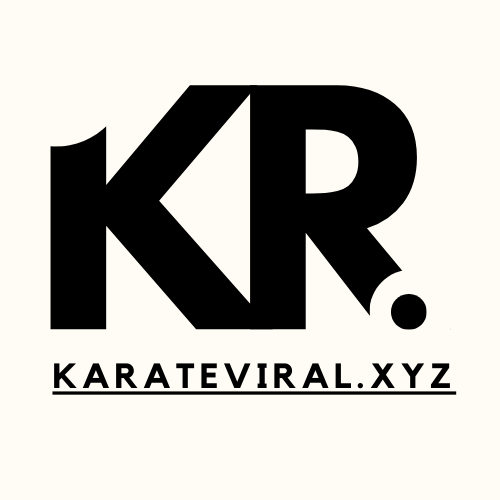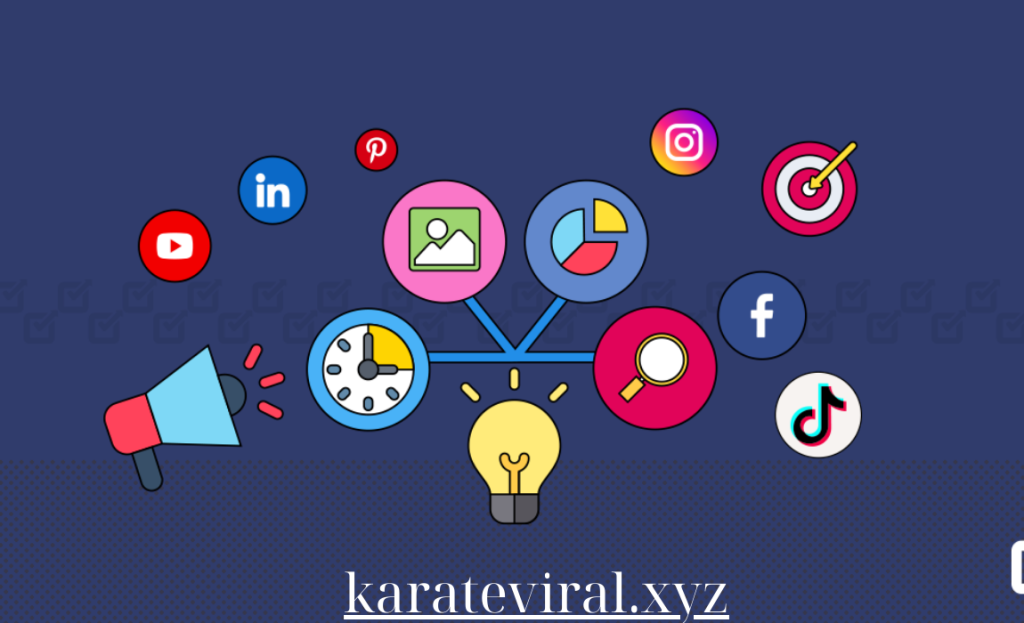Paid Social Media Advertising
Creating Effective Paid Social Media Campaigns: A Step-by-Step Guide
Paid social media campaigns can significantly boost your visibility, reach, and conversions when executed properly. With careful planning, targeting, and optimization, you can achieve excellent returns on your advertising investment. Here’s a step-by-step guide to creating effective paid social media campaigns.
1. Define Your Campaign Goals
Before you create your paid campaign, it’s crucial to define what you want to achieve.
- Why it’s important: Clear goals help shape your strategy, targeting, and ad creative. Whether your objective is brand awareness, website traffic, lead generation, or sales, your campaign goals will influence every aspect of the ad.
- How to do it:
- Brand Awareness: If your goal is to build brand awareness, focus on reach and engagement metrics like impressions, likes, and shares.
- Lead Generation: If you’re seeking leads, set up a campaign that encourages sign-ups, form submissions, or downloads.
- Conversions: For sales or conversions, focus on direct-response ads with a strong call to action (CTA) that drives purchases.
Tip: Use SMART goals (Specific, Measurable, Achievable, Relevant, Time-bound) to set clear and trackable objectives.
2. Know Your Audience
Understanding your target audience is critical for running successful paid social campaigns. The more specific your targeting, the better your results.
- Why it’s important: Targeting the right audience ensures that your ad reaches the people most likely to engage or convert, maximizing your budget.
- How to do it:
- Demographics: Consider factors like age, gender, location, income, and education.
- Interests and Behaviors: Use targeting options based on users’ interests, behaviors, purchase history, and online activity. Tools like Facebook Audience Insights and Twitter Analytics can help you define these segments.
- Custom Audiences: Upload email lists, target website visitors using Facebook Pixel or LinkedIn Insight Tag, or create lookalike audiences based on existing customers.
Tip: Continuously refine your audience based on campaign performance to optimize targeting.
3. Choose the Right Platform
Each social media platform has unique strengths and user demographics. Choosing the right platform depends on where your target audience is most active.
- Why it’s important: Different platforms cater to different audience types and content formats, so aligning your campaign with the right platform ensures higher engagement and effectiveness.
- How to do it:
- Facebook & Instagram: Ideal for both B2B and B2C campaigns, offering broad reach and robust targeting options. Great for visual content and a mix of ads, such as stories, carousel ads, and video ads.
- LinkedIn: Best for B2B campaigns targeting professionals, decision-makers, or specific industries.
- Twitter: Effective for driving conversations and quick updates, ideal for time-sensitive promotions or trending topics.
- Pinterest: Excellent for eCommerce, lifestyle, and DIY-focused businesses with a visual emphasis.
- TikTok: Perfect for targeting younger audiences with short, engaging video content.
Tip: Start with the platform where your audience is most active and consider running tests across multiple platforms to see where your ads perform best.
4. Set Your Budget
Deciding on your budget is crucial for determining how many people will see your ads and how long your campaign will run.
- Why it’s important: The right budget ensures that your campaign reaches enough people to make an impact, while also staying within your financial limits.
- How to do it:
- Daily vs. Lifetime Budget: Set a daily budget to control how much you spend per day, or choose a lifetime budget for the campaign to allocate a total amount.
- Bidding Strategy: Platforms like Facebook and Google Ads allow you to bid manually or automatically. Set your bid according to the goals (e.g., cost per click, cost per impression).
- Test Small First: Start with a small budget to test different audiences, creatives, and bidding strategies before scaling up.
Tip: Monitor your budget closely to ensure your campaign is running efficiently and adjust if needed based on results.
5. Craft Compelling Ad Creatives
Your ad creatives (images, videos, and copy) must be visually engaging and clear to capture your audience’s attention and convey your message effectively.
- Why it’s important: The quality of your visuals and messaging directly impacts whether users will engage with or ignore your ad.
- How to do it:
- Eye-Catching Visuals: Use high-quality, vibrant images or videos that reflect your brand and attract attention. Make sure visuals align with the platform (e.g., vertical videos for Instagram Stories or TikTok).
- Concise Copy: Keep ad copy short, punchy, and to the point. Highlight the key benefits, and use a strong CTA like “Shop Now,” “Sign Up,” or “Learn More.”
- Video Ads: Videos tend to perform better in terms of engagement. Create short, attention-grabbing videos that convey your message in the first few seconds.
Tip: A/B test different creatives to see which ones perform best in terms of engagement and conversions.
6. Optimize Landing Pages
A well-optimized landing page ensures that visitors complete the action you want them to take after clicking on your ad.
- Why it’s important: A seamless experience from ad to landing page increases conversion rates and ensures users don’t bounce away due to slow load times or confusing layouts.
- How to do it:
- Consistency: Ensure that the ad messaging and visuals match the landing page content. This builds trust and reassures users they’re in the right place.
- Fast Loading: Make sure your landing page loads quickly, as slow pages can lead to higher bounce rates.
- Clear CTA: Make your CTA (e.g., “Buy Now,” “Get a Free Quote”) prominent and easy to find. Eliminate distractions that could divert attention from your primary objective.
Tip: Continuously test different landing page designs and copy to see what improves your conversion rates.
7. Target Based on Audience Intent
Your targeting should align with the audience’s intent and their stage in the buyer’s journey. Tailor your campaigns to reach users based on where they are in the funnel.
- Why it’s important: A user further along the buying journey requires a different ad approach than someone who’s never interacted with your brand before.
- How to do it:
- Top of Funnel: Focus on brand awareness with broad targeting and engaging, educational content.
- Middle of Funnel: Target users who have interacted with your content (e.g., website visitors, social media followers) with more specific offers.
- Bottom of Funnel: Use remarketing to target users who have shown high intent (e.g., abandoned carts) with promotions or limited-time offers to convert.
Tip: Use remarketing to re-engage users who’ve visited your site but didn’t convert, delivering ads that entice them to return and complete the action.
8. Monitor and Optimize Campaigns
Once your campaign is live, monitoring its performance and making data-driven adjustments are essential to maximize results.
- Why it’s important: Regularly reviewing your campaign metrics allows you to optimize your ads for better performance and efficiency.
- How to do it:
- Key Metrics: Track metrics like CTR (click-through rate), CPC (cost per click), conversion rate, and ROI to measure success. Tools like Facebook Ads Manager and Google Analytics are great for tracking performance.
- A/B Testing: Test different elements like ad creatives, headlines, CTAs, and audience targeting to identify what works best.
- Adjust Bids and Budget: If certain ads are performing well, allocate more budget to those, and pause underperforming ads.
Tip: Regularly refresh your ad creatives to avoid “ad fatigue” and keep your audience engaged.
9. Leverage Analytics for Insights
Analyzing your campaign data helps you understand what works, what doesn’t, and where you can improve.
- Why it’s important: Insights from your campaign data provide valuable feedback for optimizing your current and future campaigns.
- How to do it:
- Audience Insights: Understand which demographics or interests are engaging most with your ads and refine your targeting accordingly.
- Conversion Analysis: Analyze which ads or campaigns are driving the highest conversions and adjust future campaigns to focus on similar strategies.
Tip: Use Google Analytics, Facebook Insights, or platform-specific reporting tools to dive deep into user behavior and campaign performance.
Conclusion
Creating effective paid social media campaigns involves setting clear goals, knowing your audience, crafting compelling creatives, and continuously optimizing based on data. By following this step-by-step guide, you can launch and manage successful campaigns that drive engagement, increase conversions, and deliver a solid return on investment. Experiment, track your progress, and refine your strategies to achieve the best results across your social platforms.

